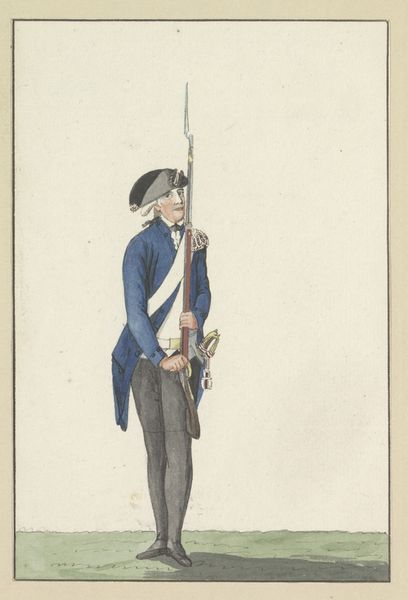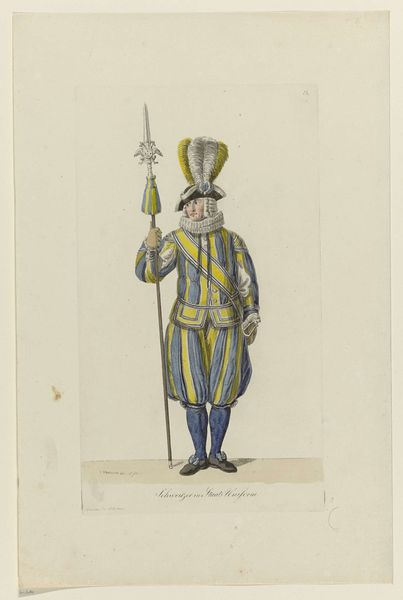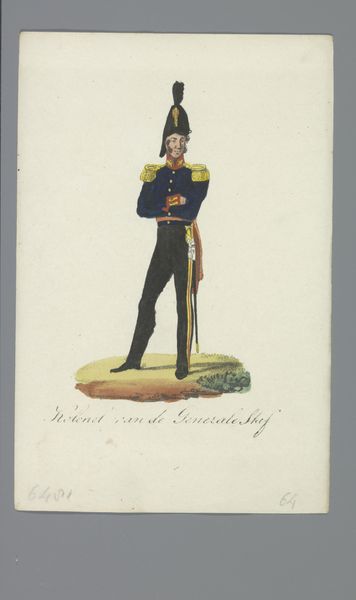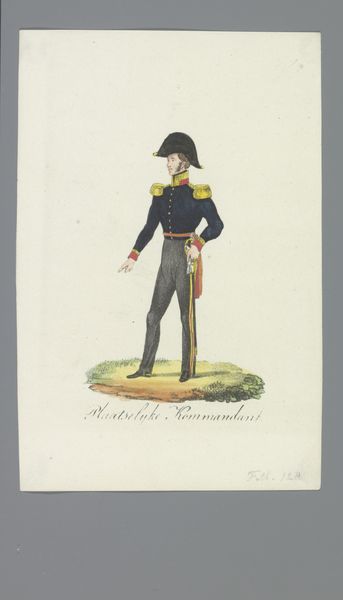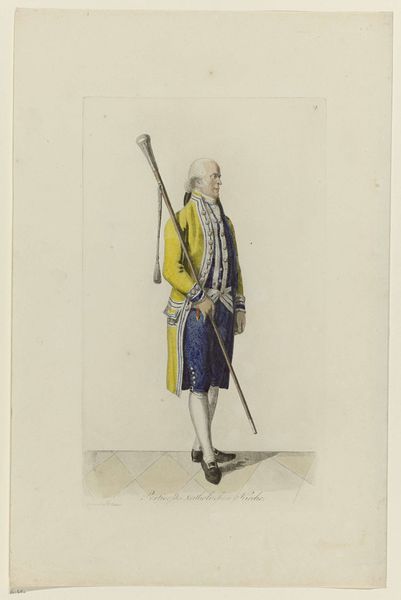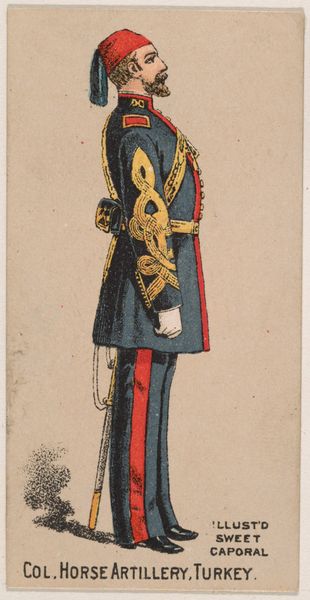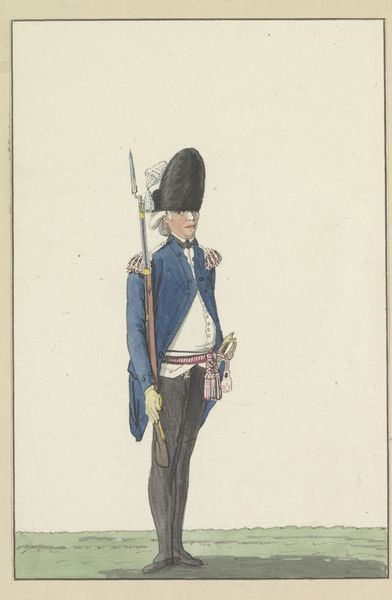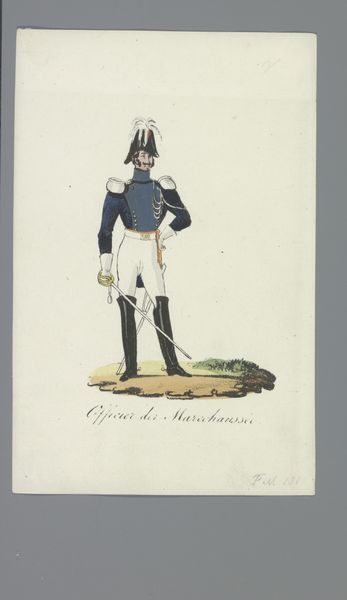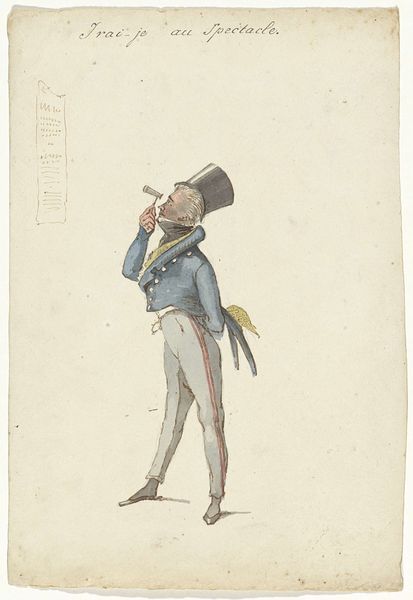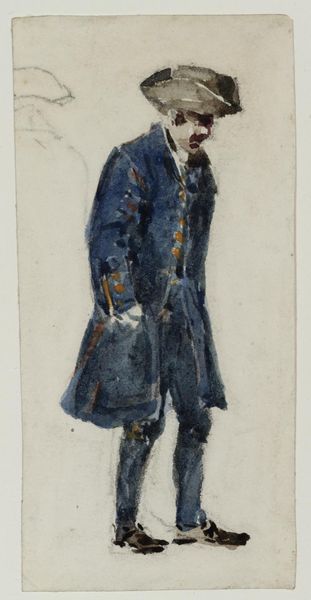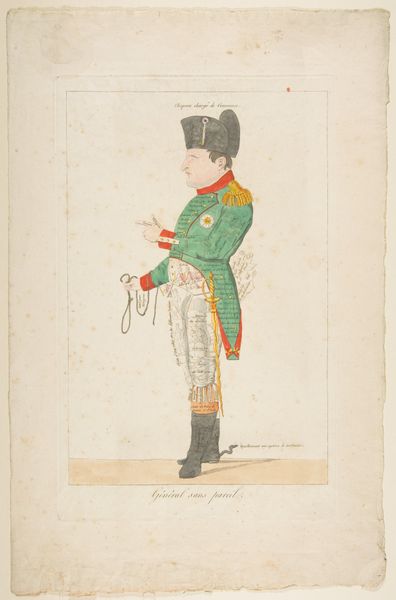
drawing, pen
#
portrait
#
drawing
#
caricature
#
caricature
#
pen
#
history-painting
Dimensions: height 206 mm, width 110 mm, height 297 mm, width 245 mm
Copyright: Rijks Museum: Open Domain
Curator: At first glance, it strikes me as melancholic. The solitary figure, slightly stooped, seems burdened by something unseen. Editor: Indeed. We are looking at a caricature of Willem V, created around 1796, a pen drawing with watercolor washes by Robert Dighton. Notice how the artist employed a limited palette to convey both a sense of formality and fragility. Curator: Formality masking fragility, precisely! The man’s bearing is weighed down by that extravagant uniform—suggesting a gap between his performative identity and lived reality. Do you find some vulnerability suggested through his hunched posture and averted gaze? Editor: Absolutely, the imagery of the cane serves as both a status symbol and an object of support. I wonder, though, about the sociopolitical context surrounding the creation of this work. Willem V governed during a period of immense upheaval. Can we consider his visual depiction here as symbolic of larger societal anxieties? Curator: Good point! I do wonder, does the small patch of green, suggesting landscape, hint at something deeper—a longing for stability amidst turbulent times perhaps? The exaggerated features serve to detach the man from himself. Dighton reduces Willem to symbolic fragments of status and decay. Editor: In isolating him with caricature, are we not also seeing an assertion of political power by the artist and his audience, dismantling established authority through ridicule? Satire has often been a weapon of the oppressed, or those who would be free of such powers. Curator: Precisely, through caricature, the figure is emptied, a vessel for projections, inviting scorn. It suggests that the man is stripped down. A reduction to parts becomes more broadly damning than outright character assassination. Editor: This distortion, though unflattering, highlights how power and authority are perceived and projected onto the physical body. That connects directly to debates around leadership, succession, and societal expectations that prevailed then and reverberate now. The figure’s image has clearly been caught in the gears of history. Curator: So true, and I can't help but feel a sense of pathos for this symbolic rendering, trapped within the visual vocabulary of decline and fall. A warning embedded within the image. Editor: Yes, images as carriers of cultural memory—both as historical documents and as active participants in shaping narratives. It offers a window into understanding the anxieties of that era, even while echoing in our own times.
Comments
No comments
Be the first to comment and join the conversation on the ultimate creative platform.

